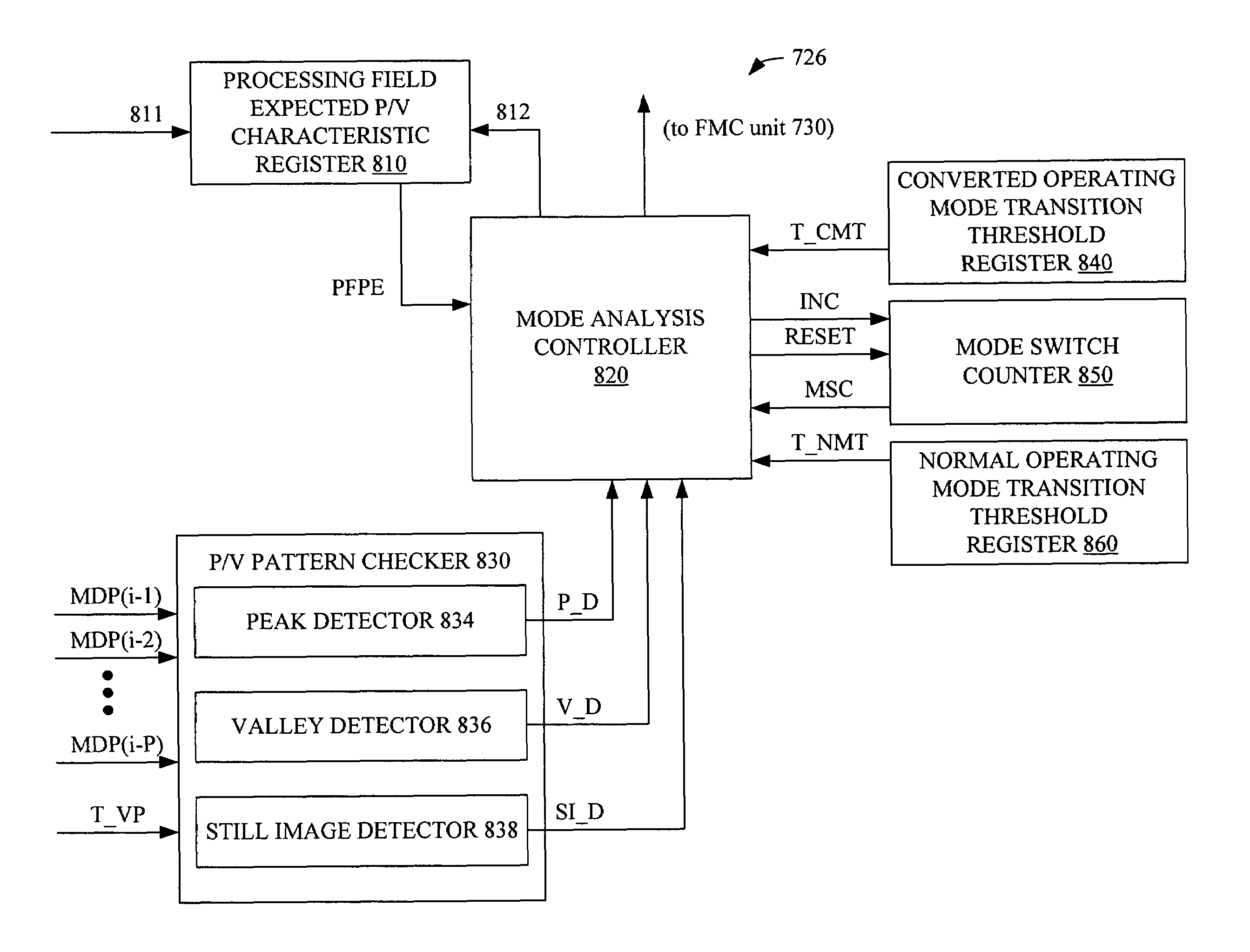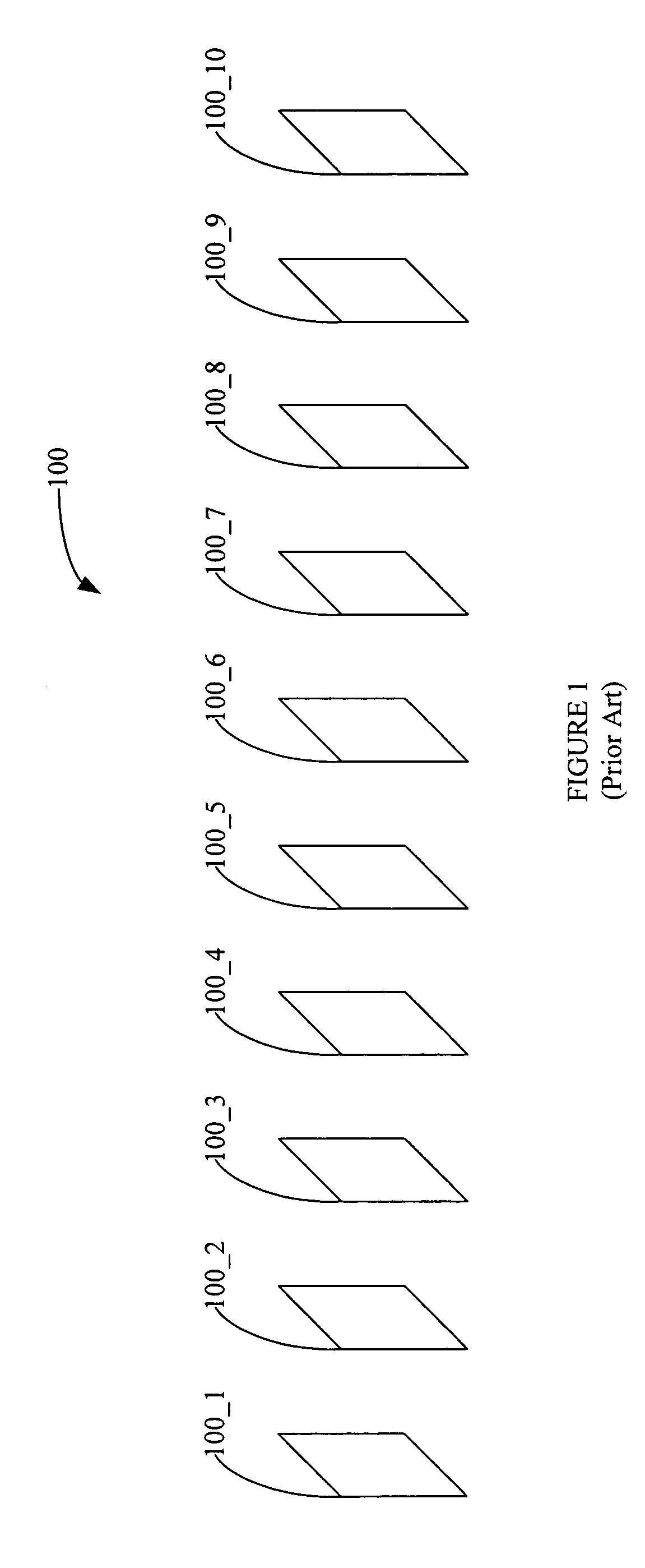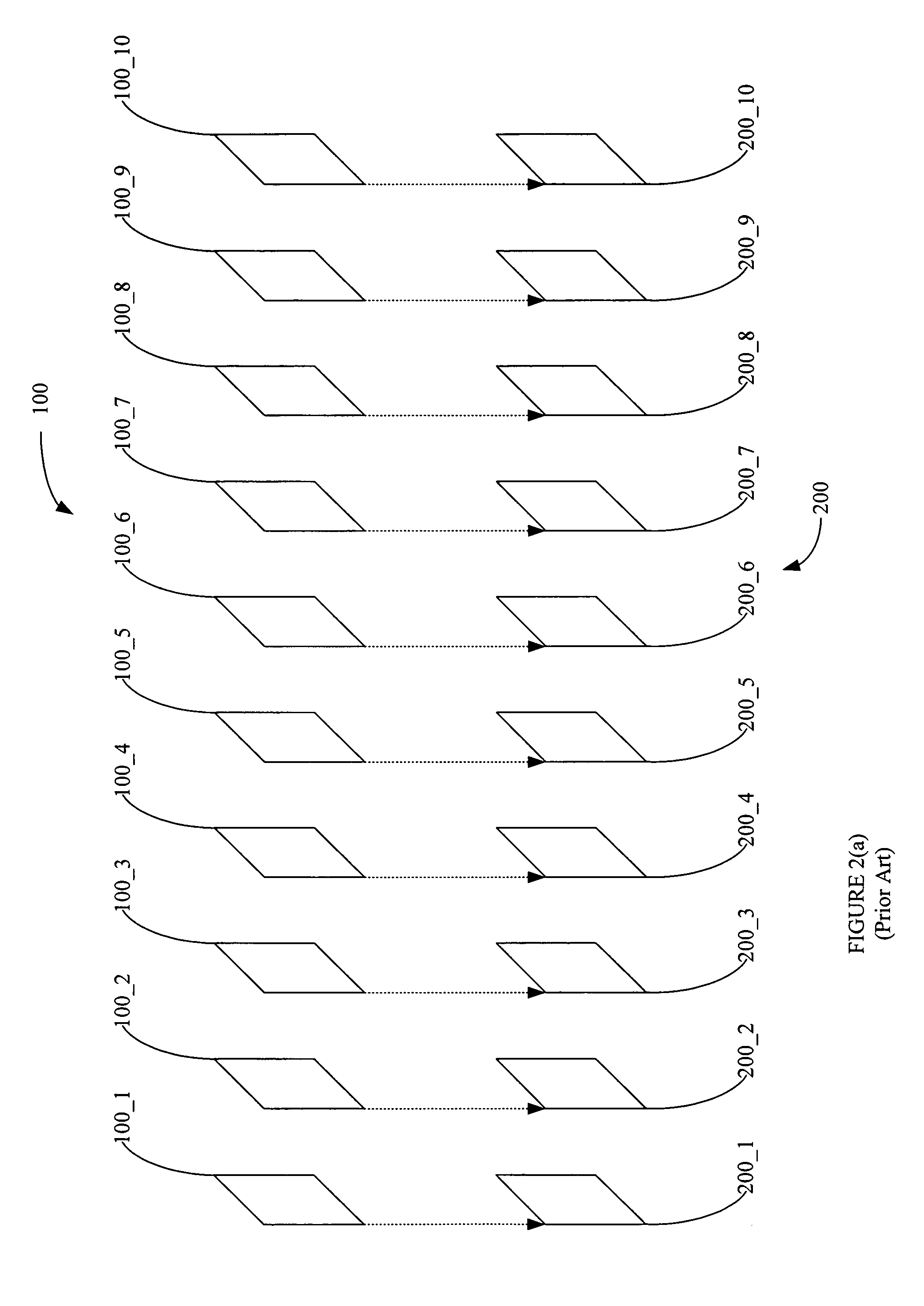Conversion of interlaced video streams into progressive video streams
a technology of interlaced video streams and progressive video, applied in the field of digital image and video processing, can solve the problems of large increase in functionality and complexity of integrated circuits
- Summary
- Abstract
- Description
- Claims
- Application Information
AI Technical Summary
Benefits of technology
Problems solved by technology
Method used
Image
Examples
Embodiment Construction
[0023]As explained above, interlaced video streams can be in normal mode or converted mode. Many interlaced video streams may also switch back and forth between normal mode and converted mode. To use interlaced video streams on progressive video systems, a deinterlacing system is used to convert the interlaced video stream into a de-interlaced video stream. However, different deinterlacing techniques are used depending on whether the current portion of the incoming interlaced video stream is in converted mode or normal mode.
[0024]FIG. 4 illustrates a method of generating a progressive video stream 400 from interlaced video stream 300, which is in converted mode because interlaced video stream 300 was formed using the interlacing process described above from motion picture video stream MPVS (FIG. 3). Rather than simply converting a field into a frame, embodiments of the present invention merge two fields of a converted mode video stream into a frame. For example, frame 400_1 is forme...
PUM
 Login to View More
Login to View More Abstract
Description
Claims
Application Information
 Login to View More
Login to View More - R&D
- Intellectual Property
- Life Sciences
- Materials
- Tech Scout
- Unparalleled Data Quality
- Higher Quality Content
- 60% Fewer Hallucinations
Browse by: Latest US Patents, China's latest patents, Technical Efficacy Thesaurus, Application Domain, Technology Topic, Popular Technical Reports.
© 2025 PatSnap. All rights reserved.Legal|Privacy policy|Modern Slavery Act Transparency Statement|Sitemap|About US| Contact US: help@patsnap.com



